Close your eyes and imagine stepping outside and into a garden. The soothing sound of dove birds cooing all around you calms you. Doves are stunning birds found worldwide, but many are surprised when they learn that doves are related to pigeons.
Pigeons are not the main topic of this article. Instead, we explore doves and how they are different from pigeons. You will learn much about well-known dove species found around the world! It’s not uncommon to picture a mourning dove, but surprisingly there are hundreds of species of these beautiful birds!
Brown Cuckoo Dove

The brown cuckoo-dove (
Macropygia phasianella).
©Imogen Warren/Shutterstock.com
The brown cuckoo-dove (Macropygia phasianella) is a dove in the genus Macropygia. While the Brown Cuckoo dove is occasionally referred to as the “brown pigeon” or the “pheasant pigeon,” it is better to avoid using either. This can lead to confusion between brown doves and the real pheasant pigeon.
When the slender-billed cuckoo dove was divided in 2016, three new species, including the brown cuckoo dove, were established. This stunning bird measures 16 to 17 inches in length. It has small wings, a long tail, and a darker rear. Its feathers are a deep shade of golden brown. The nape and neck of the males frequently exhibit a bright red or green coloring.
Doves remain in couples or flocks. Berries from indigenous plants and imported weed species are a major component of its diet. Depending on food supplies, they may be nomadic. They use enormous energy to fly close to the earth over short intervals.
Black-Winged Ground Dove

The adult male Black-winged ground dove has pink undertones and is grey and brown or clay brown on top.
©Traveller MG/Shutterstock.com
Next on our list is the black-winged ground dove. The páramo and puna ecosystems in Colombia, Ecuador, Peru, Bolivia, Chile, and Argentina are home to the black-winged ground dove. Although it mainly roosts in Polylepis forest and Puya stands, it can also be seen in grassy regions close to the tree line.
The breeding season of the black-winged ground dove fluctuates with latitude. Eggs have now been discovered between August and October in Colombia and Ecuador. In the south, the season lasts until February after October. It normally builds its flimsy platform nest out of sticks in shrubbery, succulents, or cacti, although it can also build one on the ground.
The adult male nominee has a little pink undertone and is grey and brown or clay brown on top. The underparts are pale pink with a whitish neck and gray flanks. A white margin and some light gray can be seen on the closed wing.
Like the exposed skin that envelopes it, the color of the eyes varies greatly. The underneath section of the adult female is much less pink and paler brown than the male.
Namaqua Dove
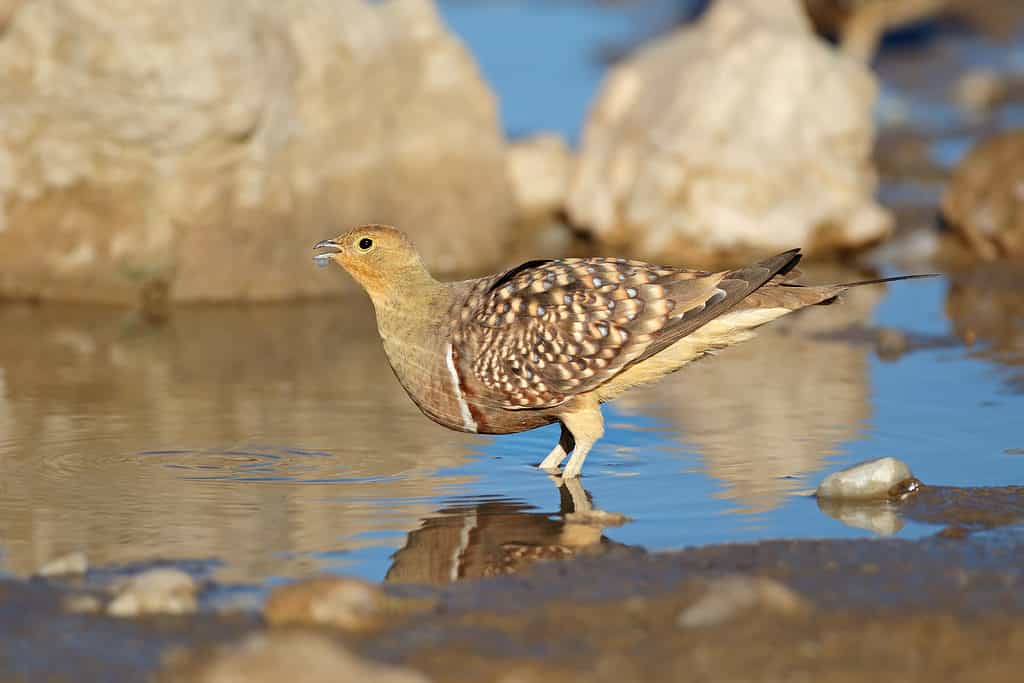
The Namaqua dove is often compared to the Budgerigar, which has an extremely long, black tail with a pointed tip.
©EcoPrint/Shutterstock.com
The Namaqua dove is a common native and breeding bird in Madagascar and southern Africa. Additionally, southern Israel, Jordan, and the Arabian Peninsula are included in its range. This species can be found among shrubs and acacia in arid areas.
It nests in a shrub with a stick and deposits two white eggs, which the female incubates for 16 days. It likes to stay pretty low and fly quickly with clipped beats. Its size and appearance have prompted comparisons with the Budgerigar, which has an extremely long, black tail with a pointed tip.
Except for a white underbelly and primary chocolate feathers noticeable in flight, the plumage is primarily grey. Aside from having a yellow and red bill, the mature male has a black face, neck, and chest. The adult female Namaqua Dove is gray with a red foundation without the black.
Blue-Headed Quail-Dove
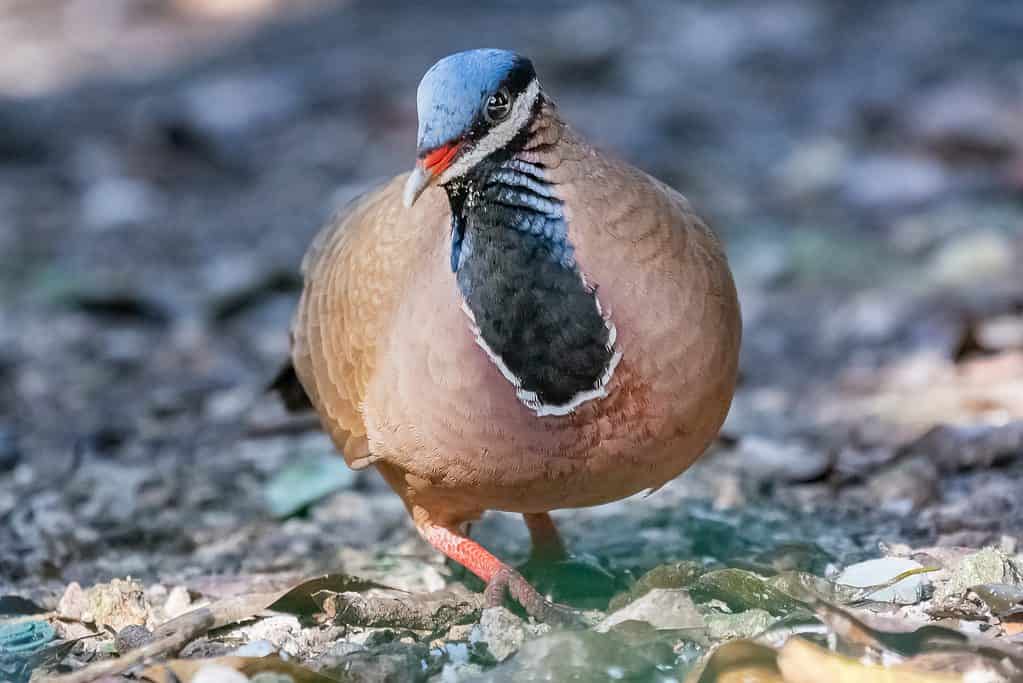
Blue-headed Quail-Doves originated in Cuba.
©Piotr Poznan/Shutterstock.com
The threatened Blue-headed Quail-Dove, an indigenous to Cuba, is among the most stunning. Since it is the only species in the genus Starnoenas, it has been widely believed to be solitary. Still, a recent study reveals that it is much more remarkable than originally thought.
Anatomical variations, including skeletal characteristics, the form of the scaling on the legs, and the lack of a preen gland, set this species apart from all other dove species found in the New World and most closely resemble species in Australia and adjacent areas.
Australian species are also more comparable to other quail-dove species in mating and aggressive behaviors. A vivid blue crown, black eye bands, white facial stripes, a black gorget tightly surrounded by white markings, and blue mottling on the sides are all features of this bird’s body, which is primarily caramel-brown in color.
Black-Billed Wood Dove
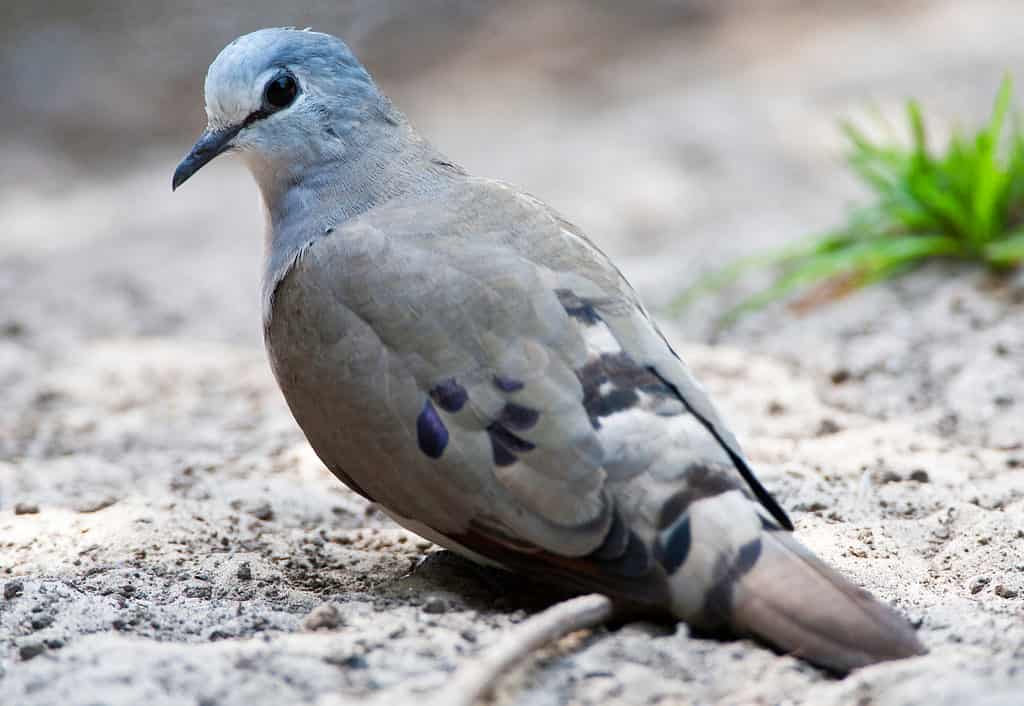
Black-billed Wood Doves are little, stout pigeons weighing around 2.3 oz and are 7.5 to 8 inches long.
©Agami Photo Agency/Shutterstock.com
The Ugandan or Sudanese Black-billed Wood Dove (Turtur abyssinicus), is common in an area of Africa just south of the Sahara Desert. Their ranges occasionally intersect in northwest Kenya, northeast Uganda, and a small area in Ethiopia and the very southeast of Sudan.
Black-billed Wood Doves are little, stout pigeons weighing around 2.3 oz and are 7.5 to 8 inches long. As their conventional name suggests, they have black bills. The tail, wings, and rump are a light gray-brown color. Along the lower back and tail, there are dark lines.
The bluish grey of the forehead, head, and neck fades to a whitish hue on this dove’s face. There are characteristic dark shiny spots on the folded wings. They normally fly low, and their flying is swift, with frequent wing beats and sometimes rapid wing flicks. The underwing chocolate spots are evident when the bird is flying.
Tambourine Dove
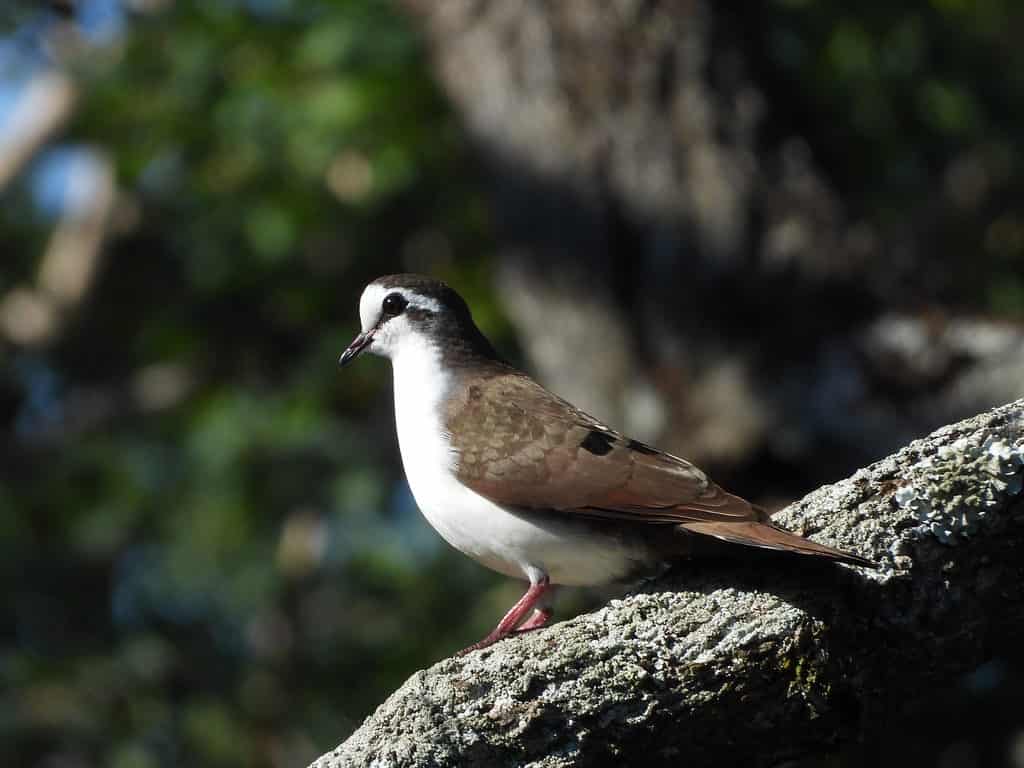
Tambourine doves have faded brown backs, hind necks, wings, and tails.
©Maniki/Shutterstock.com
The penultimate dove on our list is the tambourine dove! Tambourine Doves are native to central and southern Africa; they can be found in Senegal and Gambia, as well as southern Somalia, Ethiopia, and South Africa’s central and eastern regions. The arid parts of southwestern Africa are devoid of them.
Additionally, they are indigenous to the Comoro Islands, which are located off the southeast coast of Africa, and the island of Bioko, which is located off the west coast of that continent. They live in thickly forested places, such as greenhouses and fields of castor oil, cacao, and rubber, as well as other densely vegetated locations.
They typically stay close to water sources like rivers, reservoirs, and dams. Males feature white faces with black spots behind the eye, white necks, and white bellies, in addition to a gray crown. Tambourine doves have faded brown backs, hind necks, wings, and tails. The folded wings have big dark purple spots. The tail is dark underneath as well.
Mourning Dove
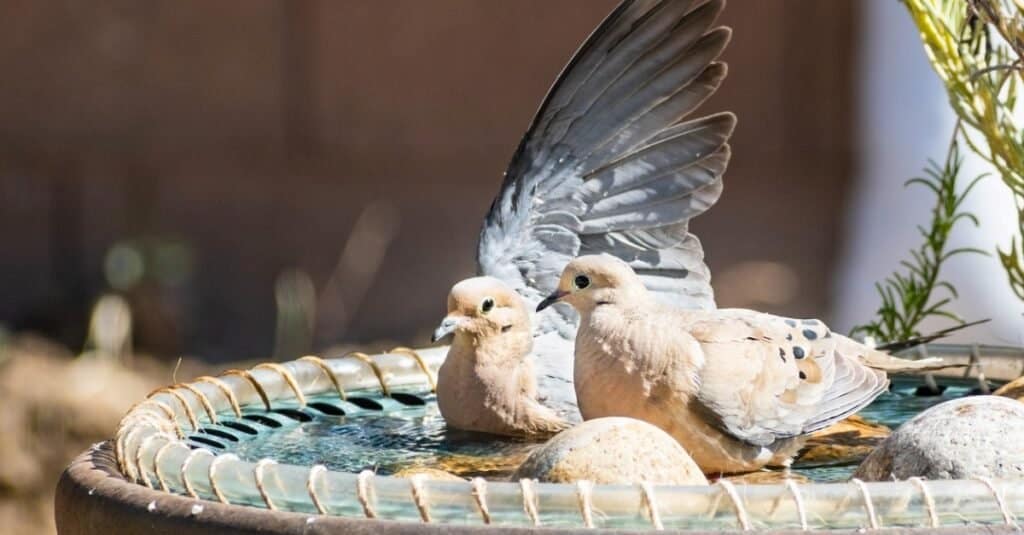
A pair of mourning doves (
Zenaida macroura) bathing in a water fountain, San Francisco Bay Area, California.
©iStock.com/Sundry Photography
We couldn’t end this list without including one of the most popular doves in the world – the mourning dove! The mourning dove is a widespread dove that is elegant, small-headed, and has a thin tail. Mourning Doves rest on telephone lines and hunt for seeds in the soil.
They fly quickly and precisely. Their sluggish, prolonged calls resemble sighs. Their wings emit a piercing screeching or whinnying sound when they take off. In North America, mourning doves are among the most commonly hunted species. Mourning Doves typically consume a whopping 71 calories each day, or 12% to 20% of their body weight.
If you see three Mourning Doves soaring in tight circles, the male in a mated pair usually is the bird in the front. The next is an unpaired male pursuing his rival away from the region where he intends to nest. The third is the bonded pair’s female, who appears to follow along.
Up Next: More Stories About Dove Birds!
- White-winged Dove vs Mourning Dove: What are the Differences?
- What Do Doves Eat?
- Dove Spirit Animal Symbolism & Meaning
- Meet the Bird That Sounds Like an Owl: The Mourning Dove
The photo featured at the top of this post is © Imogen Warren/Shutterstock.com
Thank you for reading! Have some feedback for us? Contact the AZ Animals editorial team.






